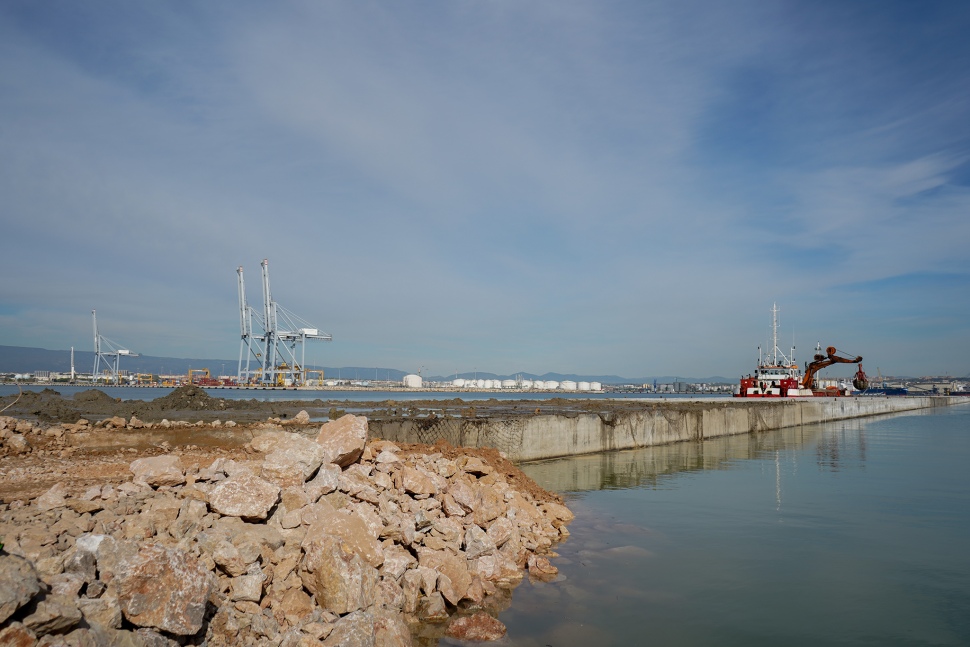The southern breakwater now connected to the caissons of the future Port of Tarragona Balears Wharf
-
Published in 2020
This first connection allows the already-installed caissons to be reached by land
The first connection between the southern breakwater and the caissons of the Port Tarragona’s new Balears Wharf allows terrestrial resources to reach the caissons that have already been installed. This development, together with the construction of the northern breakwater, will enclose the Balears Wharf on both sides, giving it a highly recognisable shape.
This first land access to the caissons allows the 11 foundations to be filled with concrete by lorry, at the same time as the extrados with large-rock landfill is being built on the rear. In parallel to the construction of the southern and northern breakwaters, the dredger Ardenza is undertaking the auxiliary task of filling the 11 installed caissons from the sea. This process will complete the task of giving the necessary weight and consistency to the caissons ‒ the wharf’s foundations ‒ for any interventions that may be made in the future.
The construction of the two breakwaters is now being carried out exclusively by terrestrial resources. This phase uses diverse pieces of heavy machinery, including back hoes and the transportation by road of material from the El Llorito (Tarragona) and Blanco (Reus) quarries. The second mound situated to the north will also shortly be connected to the caissons, thus outlining the perimeter of the Balears Wharf.
Balears, a sustainable wharf
This new infrastructure will increase the Port’s capacity to receive more visitors in improved conditions. It will have a total mooring line of 700 metres, given that on 240 metres of its 460-metre length it will be possible to dock on both sides, as well as alongside the Llevant breakwater. All this will double the number of cruise ships that can dock simultaneously, as well as allowing the largest cruise liners in the world to tie up.
Moreover, the Port of Tarragona has designed this facility as a multipurpose wharf that will be able to handle different types of port traffic now and in the future. Currently, its priority use will be for passenger cruise liners and it is hoped this will be in operation in the middle of next year. The new infrastructure will have a very long operating life and its design ‒ in case it is needed ‒ will allow it to be converted to be used for solid bulks or other types of cargo.
The Port of Tarragona is studying the use of electricity connections to supply power to the different vessel auxiliary facilities while they are moored on the Balears Wharf. This will allow the use of internal combustion engines to be avoided, thus reducing pollution and saving fuel while the ships are docked in Tarragona. It is an infrastructure designed to adapt to the future challenges the Port of Tarragona is proposing with a view to making the Balears Wharf a sustainable wharf.
